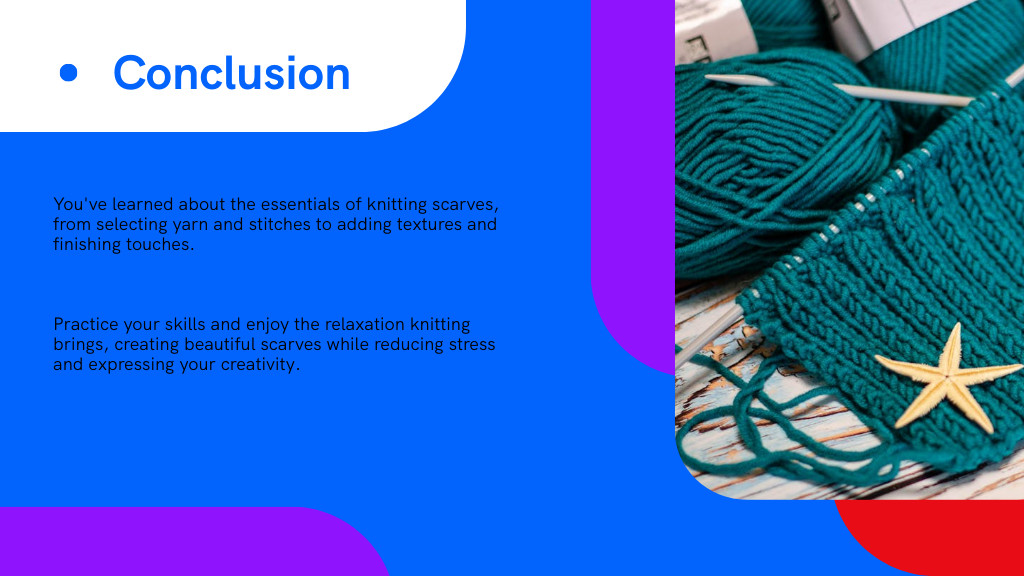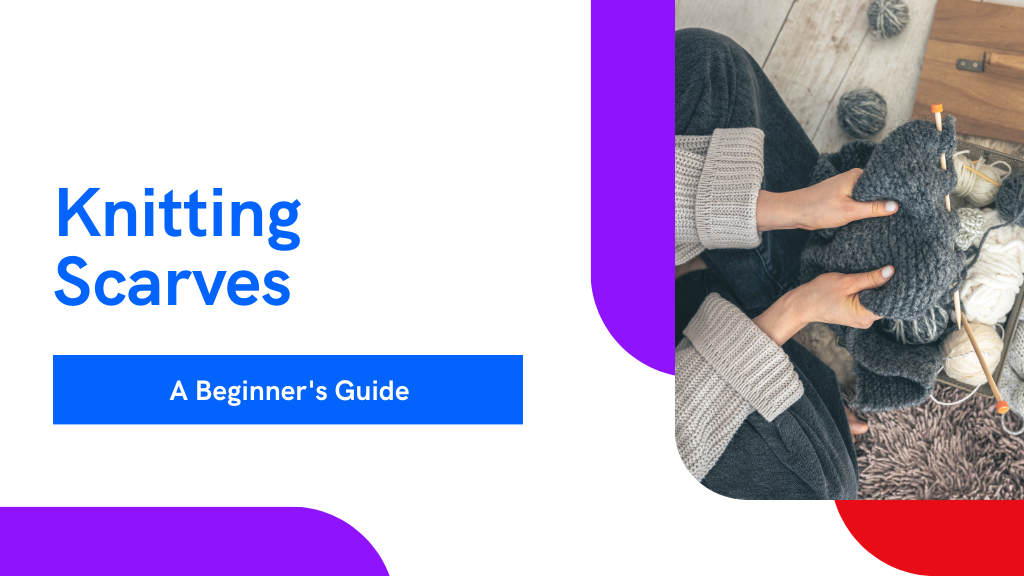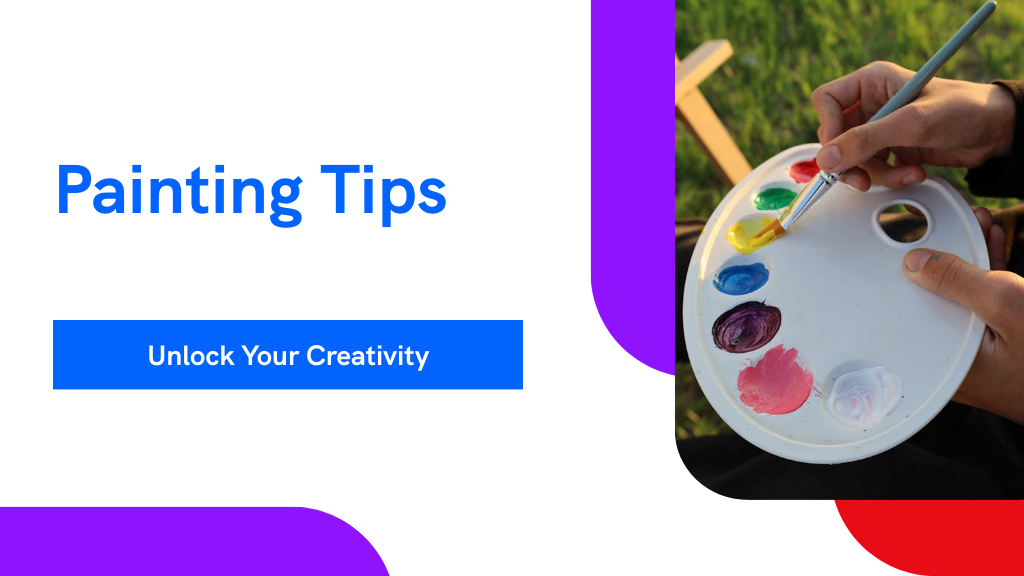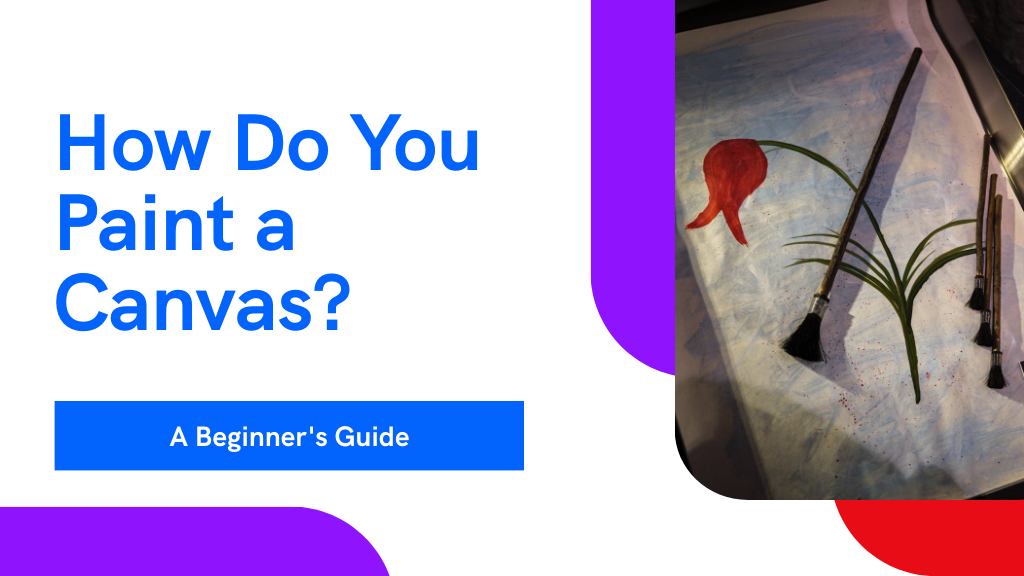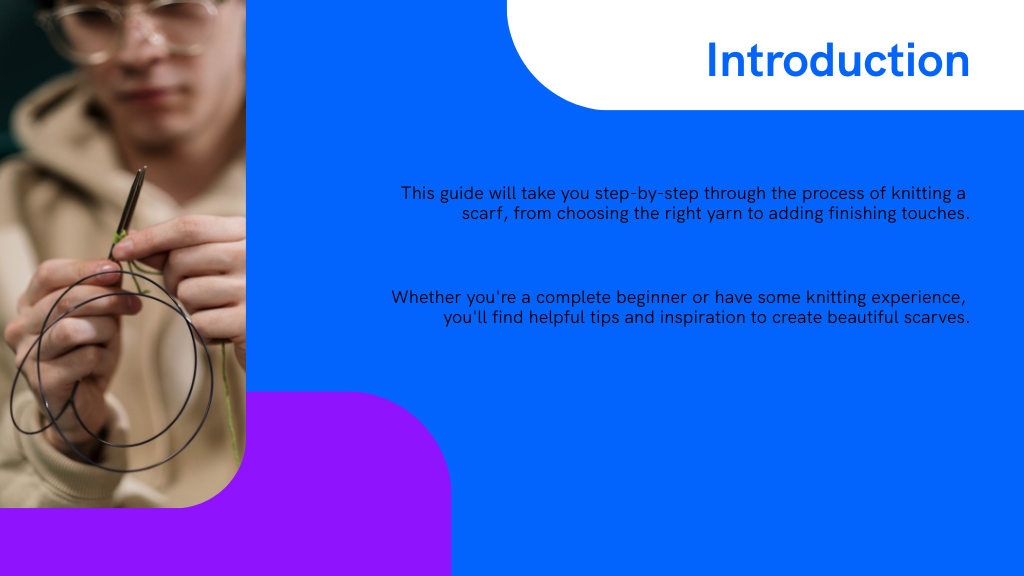
Mastering scarf knitting means choosing the right medium-weight yarn, like worsted wool blends for warmth or cotton and acrylic for lighter comfort. You'll need comfortable knitting needles, stitch markers, and measuring tape to keep your project precise. Focus on basic knit and purl stitches, maintain consistent gauge through even tension, and experiment with popular patterns like garter stitch or ribbing. With a few finishing touches and proper care, your scarves will always impress—start your knitting journey today!
Selecting the Perfect Yarn for Your Scarf Project
When you're beginning your scarf-knitting project, choosing the right yarn can make all the difference. For an easy knit scarf, select a yarn that's medium-weight and smooth. Worsted yarn is perfect for beginners creating a basic knit scarf, as it's simple to handle and shows stitch patterns clearly.
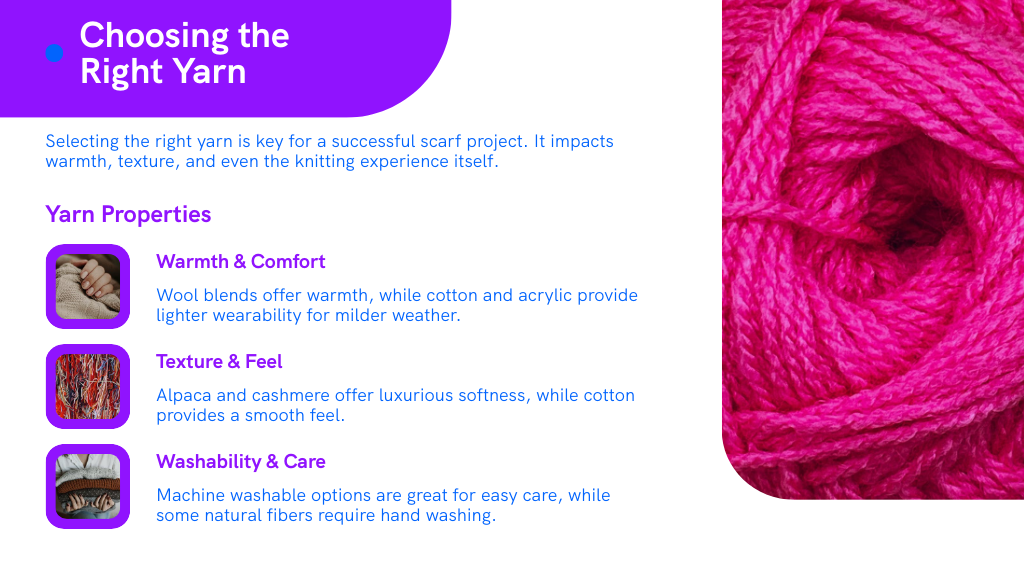
If you're exploring diverse knit scarves patterns, consider yarn texture and color carefully. Variegated yarn can beautifully highlight simpler designs, while solid colors enhance more intricate stitch work. Think about warmth and comfort—wool blends offer coziness, while cotton or acrylic provide lighter wearability for milder weather. Don't overlook yarn care instructions; machine-washable options make yarn care straightforward. With a thoughtful yarn selection, you'll guarantee your scarf is both enjoyable to knit and delightful to wear.
Essential Tools and Supplies for Scarf Knitting
Before starting your scarf project, you'll want to gather the right supplies, starting with yarn that's suited to your pattern and personal style. Selecting comfortable knitting needles is equally important, as they'll directly affect your knitting rhythm and final result. Don't forget to pick up essential accessories like stitch markers, scissors, and a measuring tape to keep your work organized and precise.
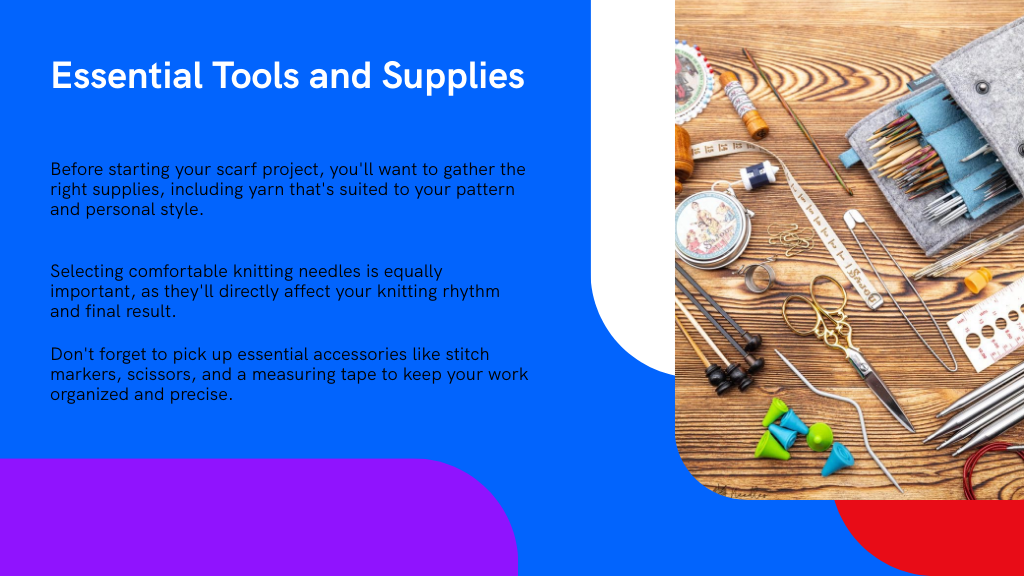
Yarn Types and Selection
Choosing the right yarn can make all the difference in how your scarf looks, feels, and wears over time. For knitting scarves, consider yarn weight first. Bulky yarns knit quickly, giving your knitted scarf a cozy, chunky feel, while lighter yarns create delicate, detailed textures. Wool offers warmth, elasticity, and durability, ideal for everyday use. Acrylic yarn is budget-friendly and easy to care for, making it perfect for beginners working on a simple scarf knitting pattern. Alpaca and cashmere yarns provide luxurious softness and warmth but may require special care. Check the yarn's label for fiber content, washing instructions, and recommended gauge. Selecting yarn that suits your pattern, comfort preferences, and intended use guarantees your scarf becomes a lasting, treasured accessory.
Knitting Needle Choices
Two main factors affect needle choice: material and size. When deciding how to make a knitted scarf, the needle material matters. Bamboo needles offer warmth, grip, and comfort, ideal if you're learning easy knitted scarf patterns, while metal needles slide smoothly, helping you knit faster. Plastic needles are lightweight and budget-friendly—perfect for beginners.
Size also impacts your scarf knit pattern results considerably. Larger needles create looser stitches, suitable for chunky, cozy scarves. Smaller needles yield tighter, denser stitches, perfect for detailed or delicate scarf patterns. Always match your needle size to your yarn's recommended gauge for best results. Selecting the right knitting needles guarantees your scarf project will look professional, feel comfortable to knit, and turn out exactly as you envisioned.
Essential Knitting Accessories
Great knitting accessories make scarf knitting easier, neater, and more enjoyable. Choose stitch markers to track your rows and maintain consistency when following the pattern on scarf projects. Invest in a sturdy tape measure to guarantee accurate scarf length and width. A quality pair of sharp scissors makes trimming yarn ends neat and precise. Yarn needles simplify weaving in ends, giving your scarf a polished finish. Row counters help you stay on track, especially with intricate scarf patterns. Storage bags or organizers keep your yarn and knitting tools tidy and portable. Blocking mats and T-pins are essential for shaping and finishing scarves, helping the pattern on scarf projects stand out beautifully. Having these essential knitting accessories handy guarantees scarf knitting success every time.
Understanding Basic Knitting Stitches and Techniques
Knitting scarves becomes much simpler once you're comfortable with basic stitches and techniques.
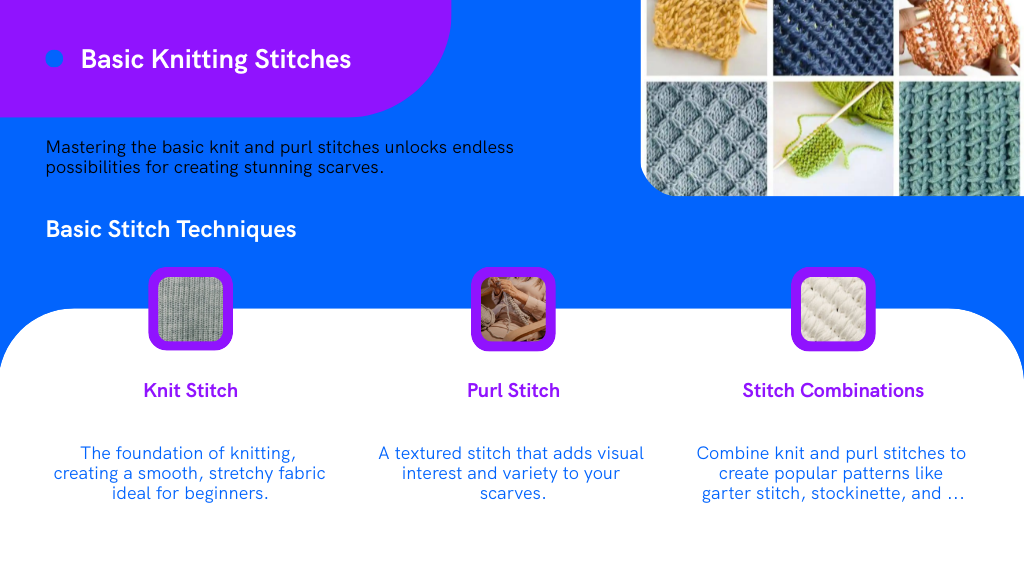
The knit stitch is your foundation, creating a smooth, stretchy fabric ideal for beginners. Next, master the purl stitch, forming textured patterns and adding variety. Combining knit and purl stitches allows you to create common scarf designs like garter stitch, stockinette, or ribbing. You should also learn how to cast on to begin your project and bind off to neatly finish your scarf edges. Practice basic increases and decreases, enabling shaping and decorative patterns. Always pay attention to stitch orientation, and correct mistakes by carefully unknitting stitches (also called "tinking"). When you're familiar with these fundamental skills, you'll confidently tackle a wide variety of scarf designs and knitting patterns.
Mastering Gauge and Tension for Consistent Results
Once you're comfortable with basic stitches, mastering gauge and tension becomes essential for consistent, professional-looking scarves. Gauge, measured by stitches and rows per inch, affects your project's finished size and drape. To achieve an accurate gauge, knit a test swatch using the same yarn and needles you'll use for your scarf. Count stitches and rows carefully, adjusting needle size if your gauge is too loose or tight.
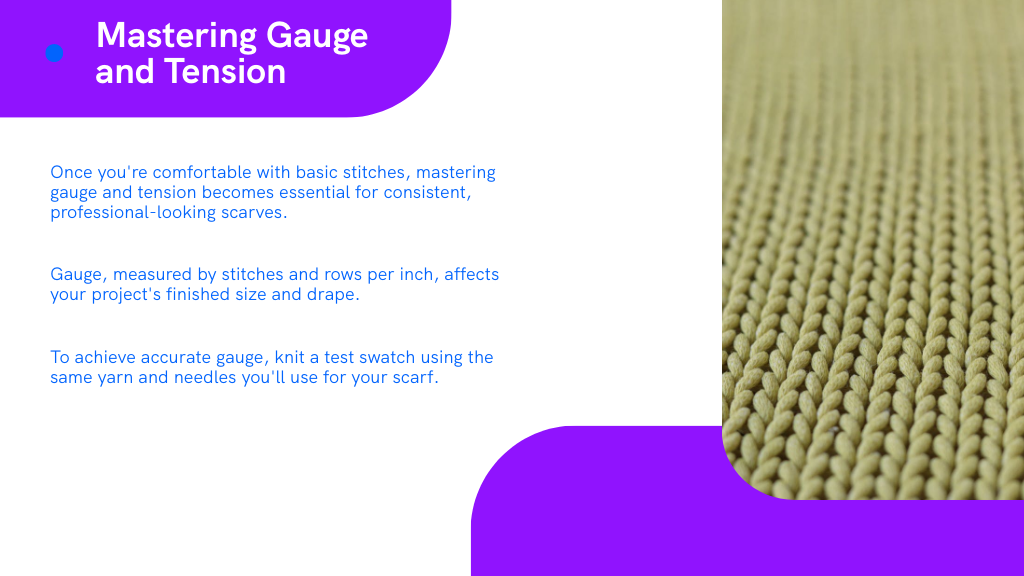
Maintaining consistent tension means applying steady, even pressure as you knit. Avoid pulling the yarn too tightly or loosely by relaxing your grip and practicing smooth, rhythmic motions. Regularly check your work to identify uneven areas early on. With mindful attention and practice, you'll soon develop the control needed for scarves that are beautifully uniform and polished.
Exploring Popular Scarf Knitting Patterns
Ready to explore new scarf patterns and expand your knitting repertoire? Experimenting with popular patterns helps you improve skills and keeps knitting exciting. The classic garter stitch scarf is perfect if you're a beginner—it's simple, versatile, and knits up quickly. For something elegant and timeless, try a ribbed scarf; alternating knit and purl stitches create comfortable elasticity. Interested in a cozy option? Consider knitting an infinity scarf—it's stylish, practical, and easy to wear.
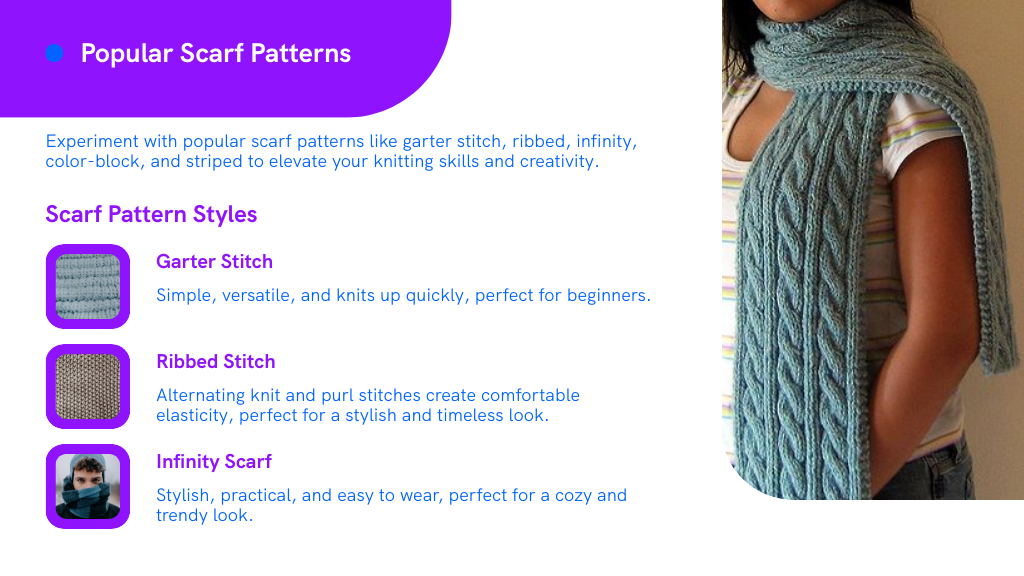
Color-block scarves offer a vibrant way to use leftover yarn, allowing creativity and personalization. Finally, striped scarves are a fun choice; pick complementary or contrasting colors to make your scarf stand out. Exploring these popular scarf patterns inspires your creativity and enhances your knitting skills.
Adding Texture and Patterns for Visual Interest
When you're comfortable with basic scarf patterns, it's time to elevate your knitting by incorporating texture and visual interest. Adding texture is simpler than you think and quickly transforms a basic scarf into an eye-catching accessory. Experimenting with varied patterns and stitch combinations creates scarves with depth and personality.
Here are three methods to easily add texture:
- Cables: Twisting stitches create elegant, braided effects and add sophistication to your scarf design.
- Seed and Moss Stitches: Alternating knit and purl stitches give your scarf a subtle, appealing texture that's versatile and stylish.
- Bobble Stitches: Small, raised stitches create playful accents and dimensions, making your scarf unique and interesting.
Try these techniques to produce scarves that stand out and impress.
Incorporating Color and Design Into Your Scarf
Now that you've explored textures, consider enhancing your scarf designs through strategic color choices and thoughtful patterns. Select complementary colors to create balance and harmony, or use contrasting shades to achieve bold, dynamic results. Think about how color placement can emphasize your texture—lighter colors often highlight intricate stitches, while darker shades provide depth and sophistication.

Experiment with stripes, gradients, or color blocks to add visual interest without overwhelming your design. Incorporating simple shapes or symmetrical motifs can also give your scarf a unique personality. Plan your color changes carefully, adjusting yarn tension consistently to guarantee smooth shifts. By thoughtfully selecting and arranging colors and patterns, you'll create scarves that are visually appealing, express your style, and attract attention.
Finishing Techniques for a Polished Appearance
Finishing touches can transform your knitted scarf from homemade to professional-looking, so they're worth mastering. Proper techniques elevate the overall appearance and durability of your project.
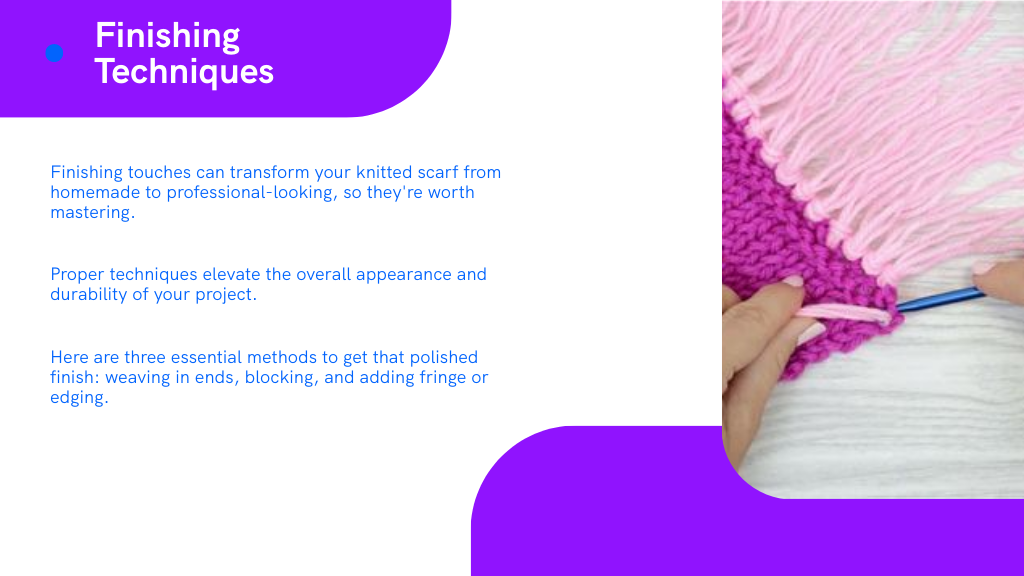
Here are three essential methods to get that polished finish:
- Weaving in Ends: Neatly secure loose yarn tails using a tapestry needle, weaving them inconspicuously along stitches on the scarf's backside.
- Blocking: Wet or steam blocking evens out stitches, smooths edges, and guarantees a uniform shape. Gently pin your scarf into place while damp and let it air dry completely.
- Adding Fringe or Edging: Fringe adds visual interest and sophistication. Carefully measure and attach uniform strands or crochet a decorative edge for a refined, finished look.
Master these techniques for scarves you'll proudly wear or gift.
Care and Maintenance Tips for Knitted Scarves
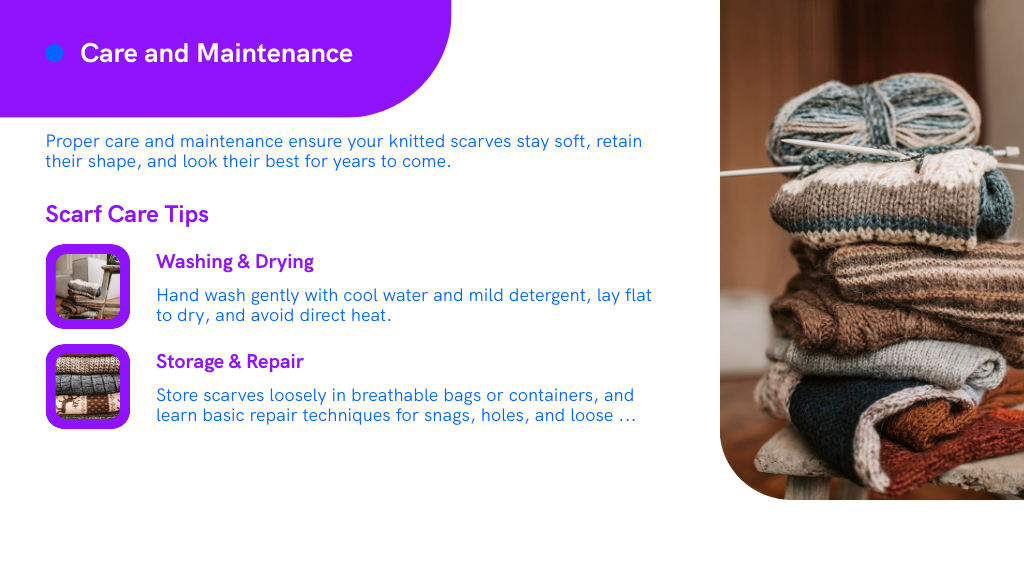
Taking proper care of your knitted scarves guarantees they'll stay beautiful and cozy for years. Knowing how to wash, dry, and store them correctly helps preserve their texture and color. Plus, learning basic repair techniques can save your scarves from common damages and extend their lifespan.
Washing and Drying Guidelines
Once you've completed your knitted scarf, it's important to know how to properly wash and dry it to make certain it stays soft and retains its shape. Follow these simple care guidelines to make sure your handmade scarf stays looking great season after season:
- Hand Wash Gently: Use cool water and a mild detergent designed for delicate fabrics. Avoid hot water, as it can shrink or damage fibers. Gently squeeze—don't wring—to remove excess moisture.
- Lay Flat to Dry: After washing, reshape your scarf carefully and lay it flat on a clean towel to air dry. Hanging can lead to stretching or distortion.
- Avoid Direct Heat: Keep your scarf away from heaters or direct sunlight to prevent fading or fiber damage.
Proper Storage Techniques
After your scarf is clean and fully dry, you'll want to store it properly so it stays soft and maintains its shape. Fold your scarf loosely rather than tightly rolling or stuffing it into drawers, as tight packing can lead to unwanted creases or stretching. Choose a cool, dry place away from direct sunlight to avoid color fading and weakening of fibers. If you're storing multiple scarves together, layer acid-free tissue paper between them to prevent friction and snagging. For long-term storage, consider placing your scarf in breathable fabric bags or containers rather than airtight plastic, which traps moisture and leads to mildew. Occasionally airing out stored scarves will also help keep them fresh, preserving their softness and ensuring they're ready to wear anytime.
Repairing Common Damages
Even with careful use and storage, knitted scarves can occasionally become damaged. Thankfully, you can handle the most common issues yourself. Here's how to tackle typical problems:
- Snags or Pulled Threads: Gently stretch your scarf around the snag to even out the yarn. Using a crochet hook or needle, carefully pull the loop to the underside, redistributing tension evenly.
- Small Holes or Tears: Match yarn closely in color and weight. Thread a tapestry needle, then neatly stitch the hole closed, following your scarf's original knitting pattern to blend repairs seamlessly.
- Loose Ends or Fraying Edges: Secure loose yarn ends by threading them through nearby stitches. Tie off discreetly on the underside to prevent unraveling, then trim excess yarn neatly.
Conclusion
You've now mastered scarf knitting essentials—from yarn choice and stitches to finishing techniques. Did you know knitting can reduce stress levels markedly? In fact, studies show that knitting regularly can lower stress hormones by up to 68%. So keep creating scarves that reflect your style, practice your skills, and enjoy the relaxation knitting brings. With each scarf you complete, you're crafting not only wearable art, but also a calmer, happier you.
